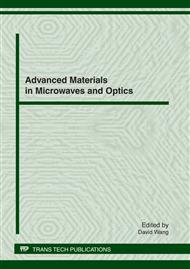p.118
p.123
p.130
p.136
p.142
p.149
p.155
p.162
p.168
The Impact of Plant Hedgerow in Three Gorges on the Soil Chemicophysical Properties and Soil Erosion
Abstract:
Through the research and sampling analysis on different plant hedgerow in sloped farmland in Three Gorges reservoir area, we will conduct research on the impact of plant hedgerow in Three Gorges on the chemicophysical properties of soil and soil erosion. The results show that the plant hedgerow mainly composed by Morus alba, Citrus reticulata, Zanthoxylum bungeanum, Vitex negundoand Begonia fimbristipula can decrease the soil density as well as sand content and increase soil porosity, soil water content, silt content and clay content to some extent. The organic matter, nitrogen, phosphorus, potassium and cation exchange capacity and other chemical indices of soil in different locations in plant hedgerow indicate as maximum in on-band, minimum in inter-band, middle both upper-band and below-band. In the same slop with no plant hedgerow, the organic matter, nitrogen, phosphorus, potassium and cation exchange capacity and other chemical indices of soil show a trend of increasing from the top to the bottom of the slop, which reveals that these substances own a feature of accumulation by moving to the bottom. The strength of soil anti-corrosion in different plant hedgerow is: Vitex negundoand (79.2%)> Citrus reticulata (36.4%)> Morus alb (22.4%)> Zanthoxylum bungeanum (18.9%)> Begonia fimbristipula (15.3%)> CK (8.7%), and the soil anti-corrosion indices in plant hedgerow are decreasing with the increase of soil immersion time, besides, the former and the latter are 3 times polynomial function. For those 5 plant hedgerows, Vitex negundoand owns the best impact on improving soil chemicophysical properties and reducing soil erosion.
Info:
Periodical:
Pages:
142-148
Citation:
Online since:
January 2012
Authors:
Price:
Сopyright:
© 2012 Trans Tech Publications Ltd. All Rights Reserved
Share:
Citation:


